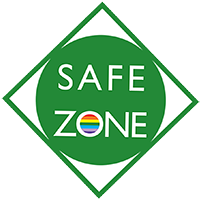Signs of Distress
As a faculty or staff member, you interact with students who conduct themselves in many different ways. When you see unusual behavior, it is important that you take notice. Use this information to guide your response to a student who exhibits signs of distress or danger.
Indicators to Consider
Academic Indicators

- Significant decline in grades or performance
- Repeated absences
- Bizarre assignment content
- Overly demanding of attention
- Disruptive behavior in class
Physical Indicators
- Deteriorating hygiene

- Excessive fatigue or irritability
- Tearfulness
- Slurred speech
- Out of touch with reality
Psychological Indicators
- Disclosure of personal distress

- Panic or anxiety attacks
- Verbally abusive
- Expressions of hopelessness
- Concern from friends
Safety Risk Indicators
- Threatening harm

- Unprovoked anger or hostility
- Communicating threats
- Other information containing themes of hopelessness, isolation, or despair
Know the Differences: Distressed vs. Dangerous
Click below to compare key differences between a student who is distressed and a student who may pose a threat.
General Indicators
- Very anxious
- Sad or withdrawn
- Lacks motivation
- Seeks constant attention
Signs to Look for
- Interactions feel less like academic counseling and more like personal counseling
How to Get Help
If a student is showing signs of distress, it is a cause for concern. There may not be a need to be worried about their physical safety, but there are important steps you should take for their general wellbeing.
Steps to take:
- Call CAPS at 805-493-3727
- Email the CARE Team at CARE@CalLutheran.edu
- Connect the student with the appropriate referral on campus
General Indicators
- Conduct is clearly and imminently reckless
- Behavior is dangerous to self or others' safety (or is suggestive of harm to self or others)
- Actions are deadly or potentially deadly
Signs to Look for
- Intense anger
- Intoxicated
- Intense withdrawl
- Discusses weapons
How to Get Help
If a student is causing a disruption but is not a threat, please make sure that you are safe. Then, use a calm, non-confrontational approach to de-escalate the situation and explain why the behavior is innappropriate. If the behavior continues, you may ask the student to leave.
If the situation escalates, then proceed with the following steps as needed:
- Call Campus Safety at 805-493-3911
- Call 911
- Follow up with an email to the CARE Team at CARE@CalLutheran.edu once the student has left
